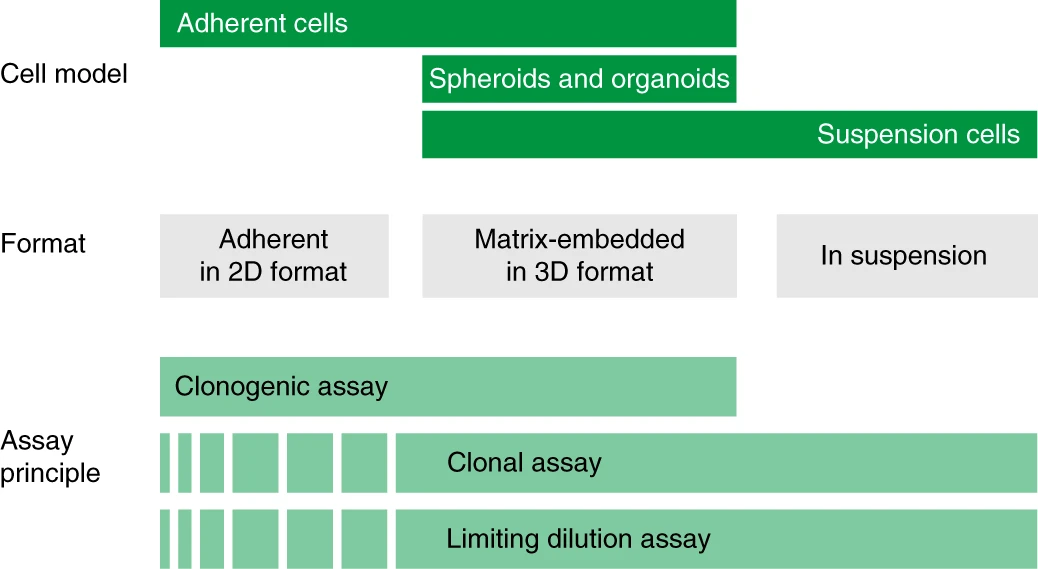23/12/2022
Print PageDKTK Tech Talk: Analysis of clonogenic growth in vitro – Dinosaur technique or still up-to-date?
A comparison of different assay formats to analyze clonogenic growth in vitro was brought to the Fellows of the DKTK School of Oncology by Prof. Kirsten Lauber from the research group Molecular Radiation Oncology, Department of Radiation Oncology at the LMU Klinikum (Munich). In this talk within the DKTK online seminar series on techniques in translational research on Novmber 22, the Fellows eagerly listened to the presentation of assay formats that were already developed more than 100 years ago, but improved and transferred to the 21st century to render them applicable to more complex cell culture models and high-troughput sampling. Starting from a 2D-cell-growth protocol from Greenwood&Yule in 1917 and Puck&Marcus in 1955, updated in 1989 and 2006, the newest version of the protocol was adapted by Lauber and colleagues with improved mathematical analysis algorithm and suitable for 3D-organoid and spheroid cultures: Brix et al. 2021.

The clonogenic assay analyzes the capacity of a single cell to form colonies in vitro: Only proliferating cells are measured which are able to undergo a minimum of six cell divisions, thus giving rise to more than 50 daughter cells. Scoring of clonogenic assays is done by counting the colonies upon seeding a limited number of cells of a single cell suspension. Similarly, yet with different underlying mathematics, the limiting dilution assay measures clonogenic growth by determining the colony formation failure fraction of serial dilutions of a single cell suspension. Scoring of the results is binary, because it only needs to be distinguished between dishes with or without clonal growth.
Historically, the clonogenic assay was developed and still is mainly used in the fields of Radiation Biology, Chemistry, and Toxicology for dose-response analyses (e.g. combined treatment responses), whereas the limiting dilution assay was developed and still is mainly used in Hematology, Virology, and Immunology, often followed by further downstream characterization of the colony-forming cells.
The publication by Brix et al. 2021 presents the clonogenic assay in a face-lifted, modular protocol framework, including the mathematical analysis tool CFAcoop (R package and Excel template-file).
The Tech Talks for Fellows of the School of Oncology will continue in 2023.
Anna Vetter, Scientific Coordinator DKTK Munich